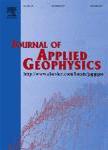版权所有:内蒙古大学图书馆 技术提供:维普资讯• 智图
内蒙古自治区呼和浩特市赛罕区大学西街235号 邮编: 010021

作者机构:Univ Tehran Coll Engn Sch Min Engn Tehran Iran
出 版 物:《JOURNAL OF APPLIED GEOPHYSICS》 (J. Appl. Geophys.)
年 卷 期:2025年第233卷
核心收录:
学科分类:0819[工学-矿业工程] 07[理学] 0708[理学-地球物理学]
基 金:Kian Madan Pars (KMP) Company
主 题:Mineral prospectivity mapping Porphyry intrusion evidential map Multistage algorithm Pariz Magnetic signature
摘 要:The quest for creating more reliable evidential maps with elevated prediction accuracy and minimal uncertainty remains a formidable challenge in mineral prospectivity mapping (MPM), particularly in the case of covered or concealed deposits. This study introduces a multistage algorithm to generate a predictive porphyry intrusion evidential map using magnetic data. Rooted in the formation model of porphyry copper deposits (PCDs), the algorithm encompasses several key steps: (1) initiating with a radial symmetry transformation to detect circular geological features (i.e., porphyry intrusions), (2) none-minimum suppression of circularity responses and thresholding to identify the center of these features, (3) amplitude contrast transformation to highlight the extent of the features, and finally (4) employing the active contour algorithm to determine the size and geometry of probable porphyry targets. Implemented on aeromagnetic data from the Pariz region in southeastern Iran, the results were evaluated by location of previously known PCDs and 3D Cu isoshells derived from exploratory boreholes. Remarkably, all six known deposits in the area were identified, alongside the discovery of a new porphyry copper deposit, boasting 2847 MT with a copper grade of 0.42 %. Additionally, five new prospective targets that may serve as fertile environments for porphyry mineralization were proposed for further exploration. The results demonstrated that the proposed algorithm significantly enhances MPM of PCDs by effectively narrowing the exploration search space, delineating 20 % (126 of 629 km2) of the study area as prospective targets. Furthermore, the findings indicate that the magnetic signatures of PCDs on the generated map are notably sharper than those on the original reduction to pole map, affirming the algorithm s efficacy in delineating buried porphyry copper deposits.